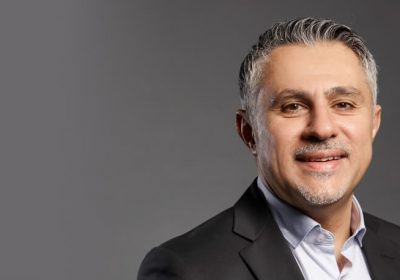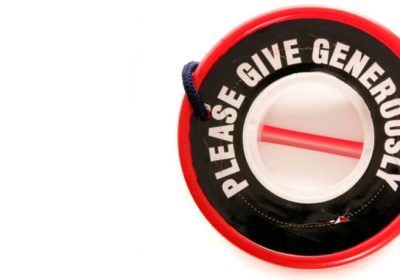
- Author: Keith Rodwell
- Posted: September 20, 2021
Stretching your Capex : Equipment leasing industry continues to thrive despite IFRS 16.
It has been said that once leasing is on-balance sheet, it would be the death of the equipment leasing industry.
Now two years after IFRS 16 was introduced, the leasing industry is as vibrant as ever. Why did the widely predicted death of leasing not eventuate?
These pundits did not understand the benefits associated with operating leases. The prediction implied the off-balance sheet treatment was the only reason for using leasing to fund equipment. Even though every credit analyst of any quality would add back the operating lease commitments. This treatment is worse than IFRS 16 for the lessee.
How do you assess the Lease vs Buy options?
Technically, the financial comparison between lease and buy has always been based on the difference between the discounted cashflows. For the lease option, this is the IFRS 16 calculation of the lease liability (and the “right of use asset”). The discount rate is either the implicit rate on the lease if known or Cost of Debt (CoD). For ownership, the equivalent cost is the acquisition price less the present value of the future sale proceeds. The future sale proceeds should be discounted at the company’s weighted cost of capital (WACC). The lowest cost represents the superior option.
What drives the outcome of your Lease vs Buy analysis?
If we assume the discount rate on the lease payments is the same as the cost of debt, then the result will depend on the following three factors:
1. The absolute level (as a % of original cost) of residual risk/future sale proceeds (i.e. long life assets).
This speaks to the asset class and in particular, the economic life of the asset at your company versus the full useful life of the asset. If an asset has utility beyond your need, there is an opportunity to release more capital under a lease.
There are many examples where a company’s need for assets will be less than the useful life:
Contract work that has a defined completion objective or timeframe. Road building, mine infrastructure or major building construction projects all require assets for a period far shorter than the effective life of the assets.
Managing changing customer behaviour or long equipment lead times. Changing consumer demand that has not yet have been confirmed as permanent or long manufacturer lead times that do not allow new assets to be acquired in time to satisfy the demand.
Cars and light commercial vehicles are often replaced in a 3-4 year cycle due to driver preference and running costs. It is important to note, as assets age, the maintenance costs increase, and reliability may suffer. Downtime may have a cost financially and reputationally if supply schedules cannot be met. The older assets can still be leveraged for utility in hire fleets or less critical activities.
Technological improvements that improve quality or productivity. These improvements drive the need for equipment upgrades to stay competitive or preserve
We therefore know there are opportunities to create value by leasing long life assets.
2. The relative difference between the residual risk taken by the lessor and the sale proceeds achieved by the owner.
The question then becomes how effective your company is at selling assets relative to the leasing companies residual position. Operating lessors are in the business of remarketing assets. They have dedicated staff focused on the sale of assets with well-established sales networks. The leasing companies are also able to re-lease assets. Importantly all of this is managed to maximise proceeds and minimise both the time and cost associated with remarketing. How does that compare with the asset sale capabilities of most commercial enterprises?
The sale of second-hand assets is not their core business.
The outcome will be dependent on the type of asset. Some assets like cars and light commercials are easy to sell as there is a well-established secondary market. Other assets do not have an active secondary market and take longer to sell with more variability in the outcome.
Selling used assets is not the core business of the lessor and assets are given to an employee to sell, as and when the need arrives. Are they motivated to get the best price? Can they access all markets including overseas markets? Does your analysis include the opportunity cost of these employees not doing their day job while they sell used equipment? For small companies, this may be the owner and the opportunity cost would be material.
Assets may be traded-in on the new acquisition, but some vendors do not offer the best value on trade-ins.
Assets may sit at the back of warehouses for many months. The assets are not maintained or kept in a condition to maximise sale proceeds. In some cases, these used assets are cannibalised for spare parts before they can be sold.
It is evident that an organisation that runs a remarketing function will have better outcomes than non-specialised staff, running infrequent sales. For a CFO to adequately incorporate these factors, net proceeds of sale, after costs, should be used for the ownership option in your lease vs buy analysis. Given the holding cost of these assets on balance sheet is the WACC, the consequence of assuming artificially higher sales outcomes results in an overly favourable view of the ownership option. In effect, the lease includes an end of term pseudo asset management service.
3. Avoidance of risks outside your control
Companies that hold long life assets on balance sheet are also exposing themselves to market volatility in the value of those assets. Future proceeds are not certain, and CFOs need to consider the risk appetite of the organisation for variability on secondary values for equipment. A risk mitigated by an operating lease.
An economic downturn or over-supply in a particular industry can occur within the economic life of the asset. Secondary values may be negatively affected by new low-cost entrants and currency movements with imported assets. We have also seen the impact of sustained periods of low inflation with new models coming to market, with enhanced features, at lower cost than the equivalent asset 3-5 years earlier.
Regulatory or market changes equally result in material changes in asset values. Climate change and investor focus on ESG considerations have seen the rise in new technologies including electric vehicles, autonomous vehicles, robotic warehouse equipment and web-enabled assets (IoT) that will negatively affect demand and values for the second-hand assets that are being replaced.
Used prices are a function of the equivalent new price rather than original cost. Therefore, in your lease vs buy analysis, the future proceeds of asset sales need to include some consideration for the volatility of outcomes driven by these risk factors.
Conclusion
These considerations combine to show equipment in its true light – as a depreciating asset. Why do you want balance sheet capital tied up in a depreciating asset, when it can be invested elsewhere to generate a return greater than your WACC. Companies are realising they need the usage of the asset, not ownership. By incorporating the costs, distraction and risks associated with future asset values, quality CFOs are finding the operating lease option is often superior. This allows companies to stretch their capital budgets and meet the investment demands of the business, whilst avoiding the risks associated with owning assets that are depreciating in value and becoming technically obsolete. It is no surprise the equipment leasing equipment industry is thriving.
Maia Financial has been funding business-critical assets across Australia and New Zealand for over 30 years. Enquire today to learn how we may be able to support you and your business plans for growth. For Australia visit maiafinancial.com.au or email directly by email enquiries@maiafinancial.com.au, alternatively call us on 1300 134 214. For New Zealand visit maiafinancial.co.nz or email directly on enquiries@maiafinancial.co.nz, alternatively call us on 0800 472 633.










